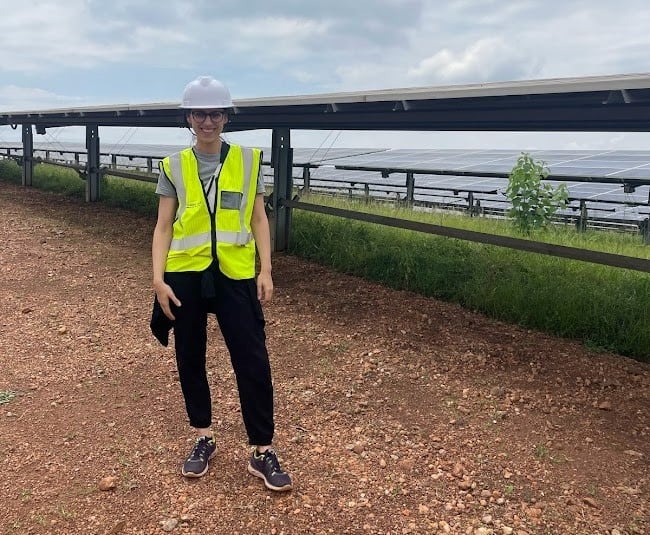Exploring Resilience on Inside Rwanda
posted January 9, 2023 by Daniela Oberstein, Marion Lemesh Fellowship Recipient

When I think about the Inside Rwanda trip in November 2022, the word “resilience” comes to my mind.
Shortly before my trip to Rwanda, I assisted as a board member of Hillel Germany with the yearly preparations for the “Festival of Resilience.” This festival came into being one year after the Yom Kippur attack on the Synagogue in Halle, Germany in 2019. Members of Hillel were among those who survived this attack. The festival poses as a reflective, artistic, and expressive space, bringing together multiple communities that have endured (right-wing) violence in Germany and abroad. It reflects on what it means to integrate loss into one’s identity and to forge a path of return toward a new, rooted sense of self. It seeks to collectively find a path toward resilience.
Although a completely different context, as I entered JDC Entwine’s Inside Rwanda trip as a Marion Lemesh Fellow, I saw, fittingly, the ideas of “bringing together multiple communities” and “seeking a path toward resilience” reflected in so many ways on this trip.
The way that the Rwandan people have navigated post-genocide life in their quest towards justice, while not without its issues, is remarkable. Delivering justice after genocide is an obviously overwhelming task. It was incredible to learn how the so-called “Gacaca trials” were able to give some survivors a sense of closure, acceptance, and forgiveness — something which for many Jews after the Shoah was mostly impossible to attain. In that sense, it was interesting for me to see how life in today’s developed in Rwanda — moving on from trauma and tragedy towards life in coexistence, be it with previous perpetrators or victims of one’s own brutality.
The fact that Jews and the Rwandan people share the experience of genocide, or collective trauma of violence and destruction, touched me deeply. While there are probably more circumstantial and historical differences than commonalities, I felt a deep connection to the place and its people throughout the trip. This journey introduced me to a history and people previously unknown to me. It also made me reflect deeper about “Global Jewish Responsibility.” In what ways can we channel the painful learnings from our past experiences into help for other people facing violence, trauma and displacement?
In the words of the Talmudic teaching: “God did not create the world to be a chaotic wasteland, God formed the world to be lived in” — I found many places we encountered during the Inside Rwanda trip proof that Rwanda is energetically emerging from being “just a wasteland.”
The Agahozo Shalom Youth Village (ASYV) felt like one of these places shaping and creating livelihoods and opportunities. It seems to be a place where the almost symbiotic relationship between the Jewish people and Rwandans comes to show and is a prime example of how Jewish people can be a helpful ally. Of course, it is important to mention that there is equally as much, if not more, for us Jews to learn from the Rwandan people and their resilience.
The interactions and opportunities to meet with the local community left me with a mark and significant impact. I am deeply moved by the resilience of the Rwandan survivors to move on from genocide as well as those young individuals of ASYV, continuing to shape their lives and futures after personal hardships. Whether my or our short visit as a group had any significant impact on our Rwandan counterparts and whether it was equally transformative for them as it was for us remains uncertain to me.
While I remain with these kinds of questions, I am filled with deep gratitude of the possibility to emerge from this trip with more new (still) unanswered questions — motivating me to continue my journey to learn more about the Rwandan people, my global Jewish community and the responsibility towards one another.